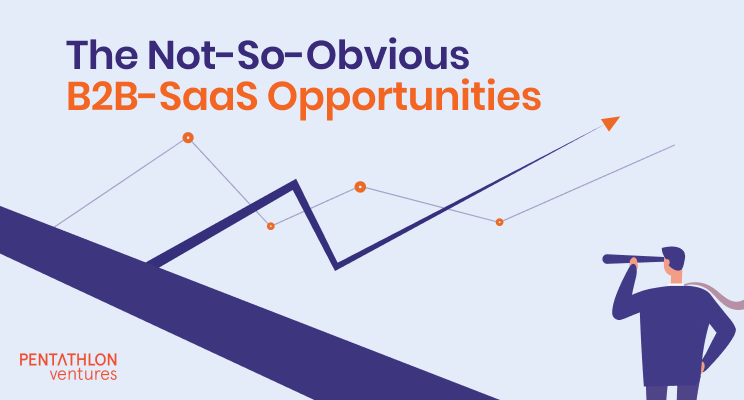B2B SaaS has become the prevailing norm in the B2B tech industry. Not only are customers benefiting from this approach, but markets are also rewarding companies with better valuations because of their recurring revenue. In 2022, SaaS surpassed Fintech as the leading category among unicorns in India, with a third of the 100+ unicorns being B2B-SaaS companies. Therefore, it makes sense for B2B companies to adopt this approach of recurring revenue, if possible. However, it hasn’t been easy for them. In this article, we identify the categories that can be brought under the B2B SaaS umbrella and discuss how these models can be continuously improved for better business outcomes.
License to SaaS:
Subscription- and transaction-based business models are favoured by most customers due to the benefits of shifting their capital expenditures (Capex) to operational expenditures (Opex). They appreciate the opportunity to try products for free (freemium models) and can stop using the product simply by cancelling the subscription.
The predictability of recurring revenue makes the business more valuable in the eyes of the market and investors. Product companies can benefit by tapping into new customer segments through subscriptions or by introducing new features to existing customers more frequently. Even well-known software products such as MS Office now provide the option for users to choose between licensed or subscription models. Adobe and AutoCAD are other examples where the shift to subscriptions improved customer satisfaction and retention.
While transitioning from one-time licence fees to subscription fees results in a revenue dip for the production company, funding can support this transition. The chances of success are higher due to the existing brand and credibility of the licensed product, now with a more customer-friendly commercial model.
Services to Product:
The productization of a successful service offering is both interesting and challenging. The primary driver for this transformation is the higher valuation of the company. However, the cultural shift from a service to a product company can be a significant hurdle to overcome.
Service companies concentrate on satisfying the unique requirements of a single customer, while product companies face the challenge of catering to a diverse customer base with varying needs while ensuring an effective product roadmap.This change in mindset is substantial. Many service companies have successfully built products based on their domain knowledge, network, and credibility in the target market. Investors are keen to invest in the product business but require the founders’ full focus. They are cautious about founders attempting to manage both services and product businesses simultaneously, as it poses a risk to their investment. Separating the services and product businesses into distinct entities or reducing services to a significantly smaller percentage of overall revenue can address this concern.
B2C to B2C2B:
Certain products, such as developer tools, are initially made for consumers (B2C) but can be leveraged to penetrate the business market (B2C2B). Slack, for example, which began as a B2C messaging app, gained popularity in the enterprise market due to its freemium model and strong user base. Zoom followed a similar trajectory, starting as a B2C video communication app before achieving phenomenal success in the enterprise world.
The inherent virality of these products, which require collaboration among multiple users, contributes to their growth as enterprise products, thus the term B2C2B. The major benefit is a significant reduction in customer acquisition costs. Word-of-mouth within the community reduces the cost of acquiring new customers during the B2C stage. This already existing traction then drastically reduces the customer acquisition cost (and time) in the B2B enterprise market as well.
B2B to B2B2C:
For startups, selling to enterprises or B2B customers is often considered challenging and time-consuming. There is inherent asymmetry when a young startup attempts to sell to a large enterprise. Pricing can be a challenge even if the use case is strong. However, if the product can bring new business for the enterprise, it transitions from a nice-to-have to a must-have for the enterprise customer.
In this scenario, existing B2B-SaaS businesses can thrive by becoming B2B2C products, targeting not only the enterprise customers but also their potential customers. Let’s take the example of a backend app for restaurants. Initially, the B2B product may focus on improving operational efficiency. However, if the product is also sold to consumers, the business can generate transaction-based revenue from each consumer transaction. It can even lead to higher subscription fee from the restaurant.
This approach proves to be more cost-effective than directly targeting consumers in a purely B2C manner.
B2B2C to Marketplaces:
Going the B2B2C route does not eliminate the challenges of enterprise selling for startups. While it may make acquiring customers easier, the sales cycle still needs to be repeated for each enterprise customer. However, once a startup achieves success with a considerable number of enterprises and builds a large consumer base for each enterprise customer, there is an opportunity to transform the product into a marketplace.
Continuing with the restaurant example, a marketplace connecting restaurants and patrons can accelerate business growth and benefit all parties involved. A curated marketplace, where the startup ensures better matches, would provide a significant advantage over competitors.
Why wouldn’t a startup begin directly with a marketplace? The challenge lies in the “cold-start” problem typical of marketplaces. Deciding which side of the marketplace to build first can be daunting. Starting with the consumer side would incur substantial consumer acquisition costs. Building the restaurant’s backend app first solves this problem, providing a B2B approach that kick-starts the marketplace.
In conclusion, the world of B2B-SaaS is brimming with opportunities that may not be immediately apparent. At Pentathlon Ventures, we welcome companies operating within the aforementioned models to share their valuable experiences and ideas. Together, let us delve deeper into the exciting potential of the B2B-SaaS landscape.




